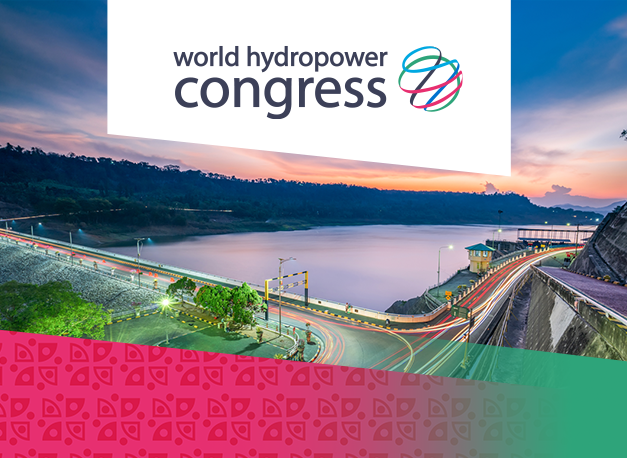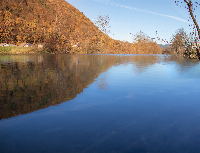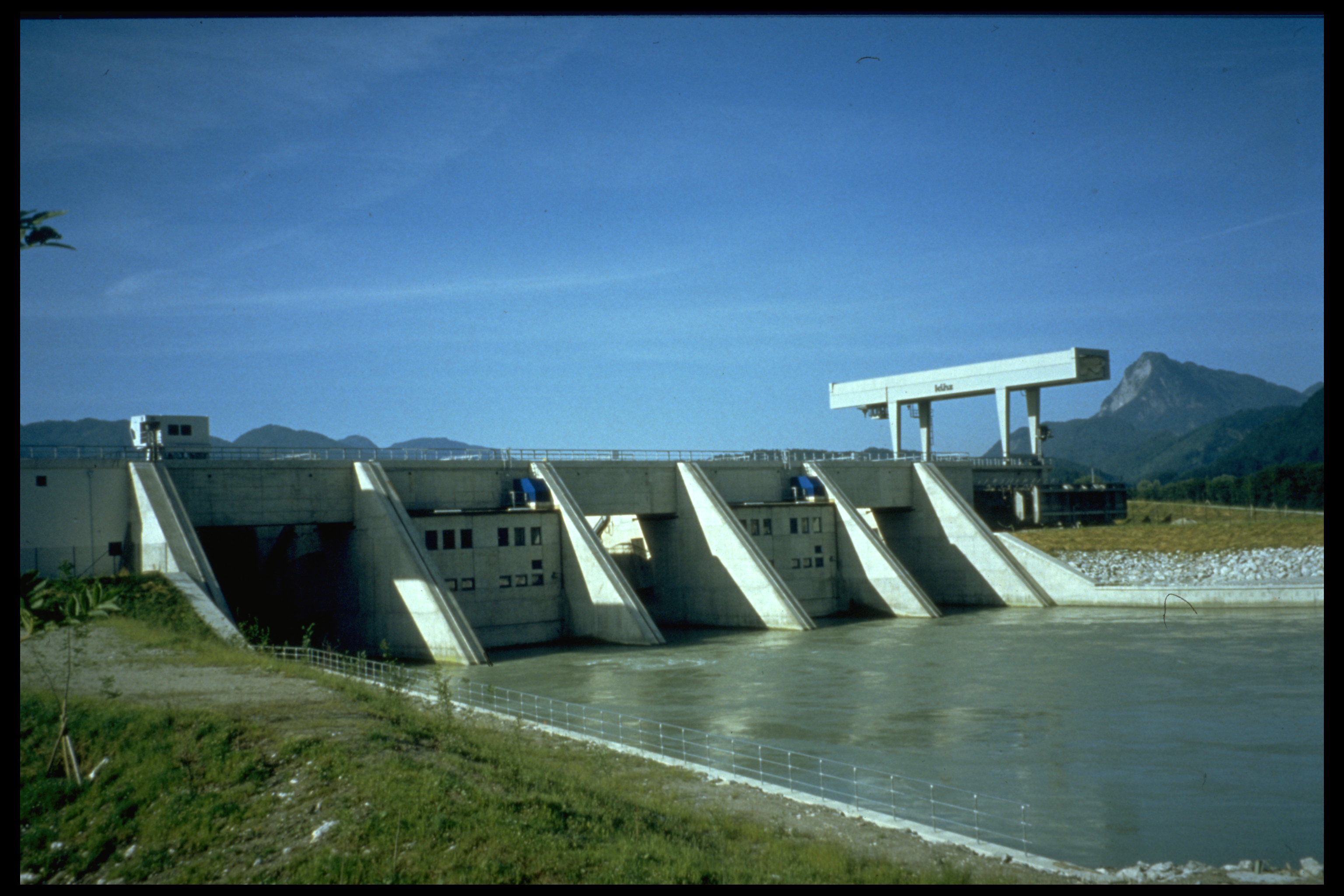UNIFYING THE VOICES OF HYDROPOWER
World Hydropower Congress 2023: Turning Hydropower Ambition into Action
Only two months for the highly anticipated 2023 World Hydropower Congress, scheduled to take place in Bali from 31 October to 2 November and organised by our partner IHA. With a mission to bridge the gap between climate ambition and actionable solutions, the Congress is expected to bring together more than 1,000 decision makers, innovators, and experts from various sectors including industry, governments, finance, civil society, and academia. This global event promises to deliver not just discussions but tangible outcomes that will shape the future of sustainable hydropower and contribute to the world's clean energy transition.
Key topics at the World Hydropower Congress 2023
The 2023 World Hydropower Congress is not merely a forum for dialogue: As the premier platform for decision-makers both within and beyond the hydropower industry, this year's Congress is thought to yield a multitude of outcomes that will have far-reaching implications. With a focus on advancing the clean energy transition and aligning strategies to the goals of COP28, the Congress aims to establish consensus on policy and finance recommendations that will pave the way for a more sustainable energy landscape. One of its key objectives is to push forward the growth of renewable energy, through the use of policy-driven and investment-based solutions. By showcasing how diverse renewable technologies can work in tandem to catalyse the transition away from coal, the Congress intends to amplify the call for greener energy alternatives. Additionally, the event seeks to shed light on the untapped potential of hydropower across regions, particularly in Asia and Africa, emphasizing the role of hydropower in shaping the future energy mix.
The Congress will be a platform, boasting over 200 high-level speakers from government bodies, industries, financial institutions, research organizations, and civil society. These speakers will participate in more than 30 sessions around energy matters. Some specific topics to highlight are clean energy security and flexibility, where discussions will revolve around pumped storage hydropower, innovative practices, and the synergy between various renewable sources. Climate-related themes will dive into mitigation, resilience, and adaptation strategies in the face of changing environmental dynamics. The nexus between water, energy, and food will also be tackled, with an emphasis on the multifaceted nature of hydropower's role in supporting sustainable development. Sustainability discussions will revolve around best practices and tools, with a particular focus on the Hydropower Sustainability Standard. The Congress will further unravel the intricate relationship between policy and finance, delving into hydropower's integration into net-zero strategies, streamlining licensing procedures, fostering green skills and job creation, financial mechanisms such as green bonds, and effective risk management strategies.
In conclusion, the World Hydropower Congress 2023 is expected to be a global speaker in the push for cleaner and more sustainable energy sources. With its emphasis on translating climate ambitions into tangible actions, this event is set to foster international cooperation, innovation, and actionable strategies. As world leaders, experts, and decision-makers convene in Bali, the Congress is anticipated to generate a series of discussions that could lead to policy recommendations, commitments, and groundbreaking insights that will propel the hydropower industry and its renewable counterparts toward a greener, more sustainable future. Stay tuned for updates as this transformative event unfolds at the end of October!
More information and registration: https://www.worldhydropowercongress.org/
Hydropower's Quest for Resilience to fight climate changeThe recent failure of the Nova Kakhovka dam in Ukraine highlights the challenges faced by hydroelectric dams worldwide in 2023 due to extreme weather conditions. While the Kakhovka dam experienced historically high water levels, many other hydro facilities have suffered from depleted water levels, limiting their electricity generation potential. This has led to a decline in hydro-powered electricity generation in Asia, Europe, and North America compared to the same period in 2022. Key hydro producers such as China, the United States, India, Vietnam, and Turkey have witnessed output falls, contributing to a global decrease of nearly 4% in hydroelectricity generation during the opening quarter of 2023, as reported by Ember. The upcoming summer season may exacerbate the situation, with hot and dry conditions expected to further reduce hydro power production potential, adding strain to global power grids already struggling to meet rising demands. Notably, major hydro producers like Norway, Sweden, France, Turkey, and Italy have collectively experienced an 8% decline in hydro output during the first quarter of 2023 compared to the previous year. While Turkey has been heavily impacted by an extended drought, Switzerland and Austria have recorded higher output levels compared to the previous year. These fluctuations in hydroelectricity generation pose challenges for ensuring a stable and reliable energy supply in affected regions. Hydropower faces significant challenges when confronted with extreme weather conditions and drought. High water levels, as seen in the case of the Nova Kakhovka dam failure in Ukraine, can strain infrastructure and lead to breaches. On the other hand, droughts and depleted water levels reduce the capacity for hydroelectric dams to generate electricity, impacting their output and reliability. With hot and dry conditions becoming more prevalent due to climate change, the risk of reduced hydro power production increases, exacerbating the strain on global power grids and necessitating the need for diversification and resilience in the energy sector. Complete information by Reuters HERE
|
Hydropower: Tapping into centuries of potential energy generationHydropower has a rich history dating back centuries, with Greeks using waterwheels to grind wheat. Today, we continue to harness the power of moving water to generate electricity, albeit with upgraded systems. Hydropower is considered "firm, dispatchable, clean electricity" as it produces minimal air pollution and greenhouse gas emissions, although damming rivers does have some environmental impacts. However, hydropower acts as a reliable water battery, providing electricity whenever needed, complementing other intermittent renewable sources like wind and solar. The changing climate directly affects hydropower due to shifts in rainfall patterns. Water is not just important for cooling fossil fuel and nuclear power plants; it is the fuel for hydropower. Without an adequate water supply, the generation of hydropower becomes challenging. Nonetheless, there are exciting innovations and investments in harnessing energy from oceans through tidal and wave power. Additionally, advancements in pumped storage technology, such as utilizing abandoned mines as reservoirs, offer new possibilities for storing and releasing water to generate electricity. As we explore these diverse ways to utilize water resources, both on land and in the oceans, hydropower continues to evolve and adapt. The ongoing development of innovative technologies and alternative approaches ensures that hydropower remains a significant contributor to our clean energy transition and helps us meet the challenges posed by a changing climate. Read the complete news by Brightly: Watt’s Up With Hydropower? How We Can Harness Nature’s Energy Source for a Greener Future - Brightly
|



